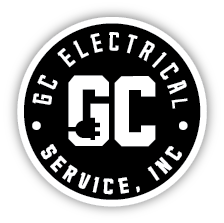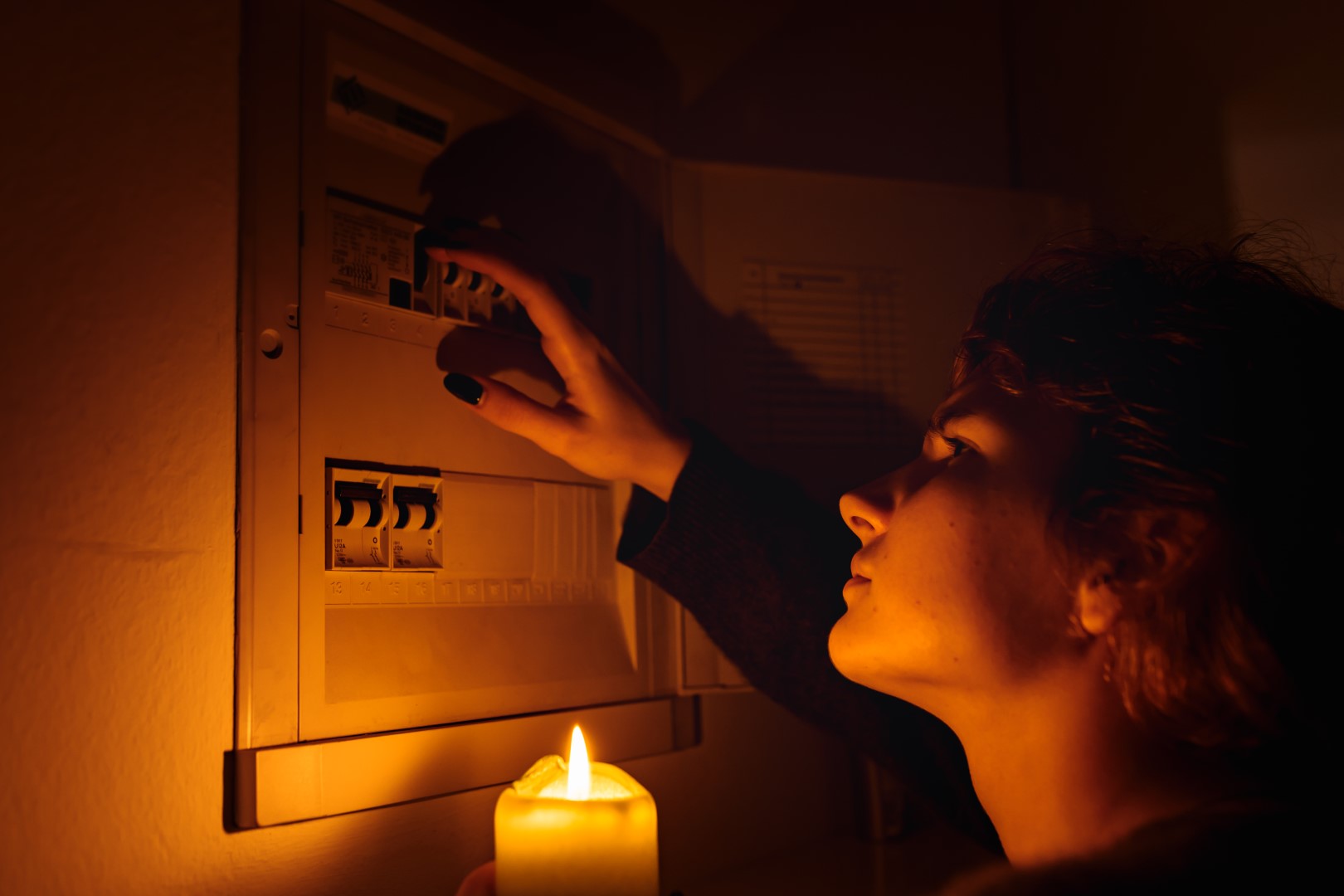A sudden power outage can be a stressful experience, disrupting your daily routine and raising concerns about the safety and functionality of your home. Whether the outage is caused by severe weather, a downed power line, or an issue within your electrical system, knowing what steps to take can help you restore power quickly and safely. We'll walk you through what to do when the power goes out, from immediate actions to safely restoring electricity and how to prevent future outages. Knowing how to handle a power outage confidently is important, as well as ensuring your home is prepared for any electrical emergency.
Immediate Steps to Take During a Power Outage
When the power goes out, the first few moments are crucial for ensuring your safety and protecting your home. Here are the immediate steps you should take:
1. Stay Calm and Assess the Situation
It's important to stay calm and assess the situation carefully. Determine if the power outage is limited to your home or if it affects the entire neighborhood. This assessment will help you understand whether the issue relates to your home's electrical system or a wider problem with the local power grid. If your neighbors are also without power, it's likely a neighborhood-wide issue, but if only your home is affected, the problem may be isolated to your electrical system. In severe weather or a natural disaster, stay informed by listening to emergency broadcasts on a battery-powered radio.
2. Unplug Appliances and Electronics
When the power goes out, it's important to unplug appliances and electronics to protect them from damage. When electricity is restored, power surges can occur, potentially damaging sensitive electronics. Disconnect refrigerators, air conditioners, and other large appliances to prevent damage from power surges, and turn off all lights except one so you'll know when the power is restored without risking a surge. Unplug computers, televisions, and other sensitive electronics, ensuring surge protectors are used for added protection.
3. Report the Outage
If you determine that the outage affects your entire neighborhood, contact your local utility company to report the outage. Many utility companies have automated systems or apps that allow you to report outages quickly. Providing details about the outage can help utility crews restore power more efficiently. Use a smartphone or battery-powered device to check the utility company's website or social media for updates on the outage. If you see a downed power line, stay far away and report it to the utility company immediately. Downed lines are extremely dangerous and should only be handled by professionals.
Steps to Restore Power in Your Home
You can begin restoring power once you've taken the immediate steps to ensure your safety and protect your appliances. Depending on the cause of the outage, you may be able to restore power yourself or need to wait for utility crews to address the issue.
1: Check Your Circuit Breaker
If the power outage is limited to your home, the issue may be with your circuit breaker. A tripped breaker can cut off power to specific areas of your home or the entire house. Here's how to check and reset your circuit breaker:
-
- Locate the Breaker Box: Your circuit breaker box is typically in the basement, garage, or utility room.
- Identify Tripped Breakers: Look for any breakers in the "off" position or not fully in the "on" position. Tripped breakers often look slightly misaligned compared to the others.
- Reset the Breaker: To reset a tripped breaker, switch it fully to the "off" position and then back to the "on" position. A more serious issue may require professional attention if the breaker trips again immediately.
2. Check for a Blown Fuse
If your home uses a fuse box instead of a circuit breaker, a blown fuse could cause an outage. Here's how to identify and replace a blown fuse:
-
- Locate the Fuse Box: Your fuse box is usually near your electrical meter or a utility area.
- Inspect the Fuses: Look for discolored, cloudy, or broken metal filaments inside. These are signs of a blown fuse.
- Replace the Fuse: Carefully replace the blown fuse with a new one of the same amperage. Turn off the main power switch before replacing the fuse to prevent electrical shock.
3. Check Your GFCI Outlets
Ground Fault Circuit Interrupter (GFCI) outlets cut off power during an electrical fault, such as a short circuit or water exposure. If the outage is limited to a specific area, such as a bathroom or kitchen, a tripped GFCI outlet may be the cause.
-
- Locate the GFCI: GFCI outlets are in areas with high moisture, such as bathrooms, kitchens, and outdoor areas.
- Reset the Outlet: If the outlet's reset button is popped out, press it to reset the outlet and restore power. If the outlet trips again, a problem may require a professional inspection.
4. Use Backup Power Sources
If the outage lasts an extended period, consider using backup power sources to keep essential appliances running. Here are some options:
-
- Portable Generators: A portable generator can provide temporary power for essential appliances, such as refrigerators and medical devices. Operate the generator in a well-ventilated area to avoid carbon monoxide poisoning.
- Uninterruptible Power Supplies (UPS): A UPS can keep critical electronics, such as computers and modems, running during a short outage and provide surge protection when power is restored.
Preventing Future Power Outages
While some power outages are unavoidable, there are steps you can take to reduce the risk of future outages and minimize their impact on your home.

Upgrade Your Electrical Panel
For homeowners in areas prone to frequent outages, investing in a permanent backup power solution can provide peace of mind and ensure that your home remains functional during extended periods without electricity. Standby generators, which are permanently installed and automatically turn on when the power goes out, can power your entire home for extended periods, making them a reliable choice during outages. Another effective solution is solar power combined with battery storage, which offers an alternative power source by using solar panels to generate electricity and store it during outages.
Maintain Your Electrical System
Regular electrical system maintenance can help prevent issues that lead to outages. It's important to have an electrician inspect your home's wiring to identify potential problems, such as frayed wires or outdated wiring systems. Regularly testing your GFCI outlets by pressing the test button and ensuring the reset button pops out can help you identify and replace any faulty outlets. Checking for loose electrical connections is also crucial, as these can cause power fluctuations and outages; an electrician can tighten any loose connections to ensure a stable and reliable power supply.
Trim Trees Near Power Lines
Falling branches are a common cause of power outages during storms, so if you have trees near power lines on your property, it's important to keep them trimmed to prevent branches from contacting the lines. Trimming trees near power lines can be dangerous, so hiring a professional tree service is best to handle the job safely. After a storm, inspect your trees for any damaged branches that could pose a risk to power lines and report any concerns to your local utility company to prevent potential outages.
Invest in Backup Power Solutions
For homeowners in areas prone to frequent outages, investing in a permanent backup power solution can provide peace of mind and ensure that your home remains functional during extended periods without electricity. Standby generators, which are permanently installed and automatically activate when the power goes out, can power your entire house for extended durations, making them a reliable option during outages. Additionally, solar panels and battery storage offer an alternative power source, providing electricity during outages and proving particularly useful in areas with frequent power disruptions.

What to Do After Power Is Restored
Once power is restored, a few additional steps are important to ensure everything functions properly and prevent potential issues.
1. Plug In Appliances Gradually
After a power outage, it's best to plug in appliances and electronics gradually to avoid overloading your electrical system. Start with essential appliances, such as your refrigerator and HVAC system, and then move on to other devices.
2. Check for Damages
Inspect your home for any signs of damage caused by the outage or power surge. Look for tripped breakers, blown fuses, or malfunctioning appliances. If you notice any issues, contact an electrician for a professional inspection.
3. Reset Clocks and Alarms
Power outages can cause clocks, alarms, and timers to reset. To ensure they are functioning correctly, reset any devices that rely on electrical power.
4. Review Emergency Plans
Use the power outage as an opportunity to review your family's emergency preparedness plan and make any necessary adjustments to ensure better preparation for future outages.
Steps and Preventative Measures for Power Outage Management
Knowing what steps to take can help you manage a power outage effectively. From immediate actions to restore power to preventative measures that reduce the risk of future outages, being prepared is key to maintaining safety and comfort in your home. Following the steps outlined in this guide, you can confidently navigate power outages and ensure your home's electrical system remains in top condition. And remember, when it comes to electrical power restoration, having a trusted professional like GC Electrical Service Inc. on your side can make all the difference.
For more tips and insights on handling electrical emergencies, visit our GC Electrical Service Inc. blog for expert advice, helpful guides, and the latest information on keeping your home's electrical system safe and efficient.


